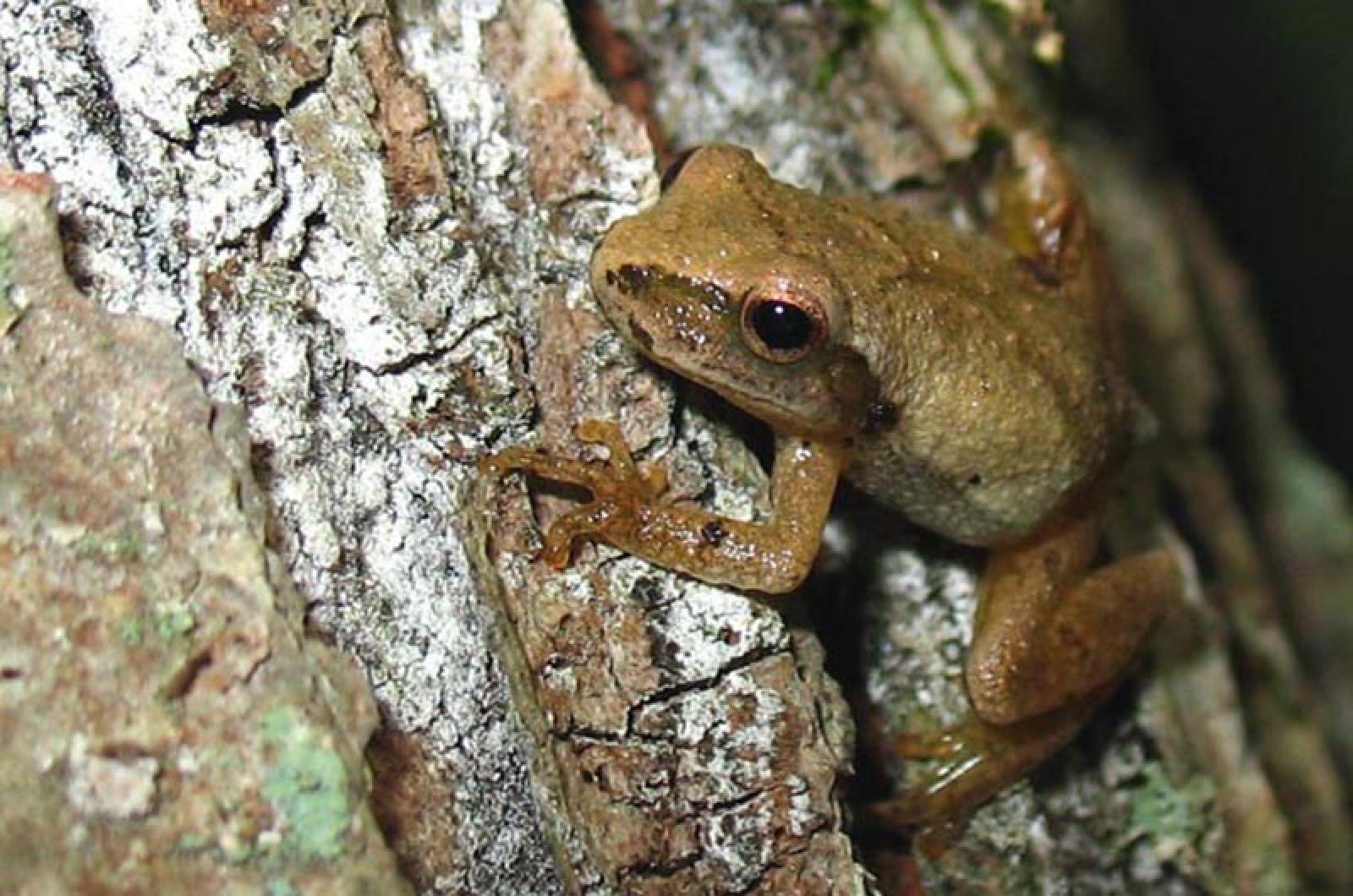Suzan Bellincampi pays the pinkletinks a visit near the Ashley Medowski Gallery in West Tisbury.
All around the Island the news has spread: the pinkletinks are back as evidenced by their high pitched springtime song. But in truth, like the hardiest Islanders they’ve been here all winter, frozen and dormant. In fact, according to Matt Pelikan of the Nature Conservancy, the little tree frogs have been here since before the Island was an Island.
“I would expect that they were probably here aboriginally, and there was population here when erosion and sea level rise cut the Island off from the mainland about 5,000 years ago,” he said.
They are a common frog, heralding springtime all across the eastern part of this continent. In the United States, they are spring peepers. On Martha’s Vineyard, for as long as anyone can recall and for reasons no one fully understands, they are called pinkletinks.
Their appearance does little to explain the Vineyard sobriquet. They range in color from light olive brown and gray to dark olive brown and gray. Their powerful call belies their smallness. One naturalist compared their size to a fingernail, another a paperclip, a third said males could comfortably sit on a quarter. Females are slightly larger than males. Sticky pads on their feet allow them to climb any surface. They have an incomplete X marking on their backs, cause for their scientific name pseudacris crucifer. Though they are deafening, they are also elusive.
“A lot of people will be born and raised and die on Martha’s Vineyard and never see a pinkletink,” said Island naturalist Gus Ben David, who keeps some in his home year-round. “You go out and try to find a pinkletink, you can’t find one.”
In winter, after spending the warm season in a colony together, the frogs burrow under the leaf litter near the edges of ponds and go dormant alone. A chemical in their bodies serves as antifreeze, preventing their cells from rupturing as temperatures drop.
They have no awareness of winter when they awaken, according to Suzan Bellincampi, director of Felix Neck Wildlife Sanctuary in Edgartown. “They’re like frog popsicles.” She said in winter their hearts can even stop beating.
As the temperature approaches 50 degrees they begin to wake-up, unfold their legs and, if they are male, let out a call.
“They wake up and they’re feeling lecherous,” Mr. Pelikan said. He noted that though pinkletinks are generally heard in spring, they will call in other seasons if the weather is warm enough.
“I’ve heard them in every month of the year,” he said.
According to a field guide from Mass Wildlife, most males call to attract a mate, but some more enterprising specimens do not join the chorus, choosing instead to silently lurk nearby a calling male in the hopes of intercepting an approaching female.
The breeding season lasts through April and sometimes into early May, according to Mr. Ben David, and females lay up to 800 eggs.
“She lays her eggs singularly and attaches them to vegetation in the water,” Mr. Ben David said. “It may take them two or three nights to lay their eggs.”
Tadpoles spend the summer coming of age in the water before hopping out at the end of the season and burrowing into the leaf litter when the cold sets in. The frogs live about three years.
This year Linsey Lee of West Tisbury has the distinction of being the first to alert the Gazette of the pinkletinks’ call. She heard them while walking her dog in her neighborhood at Seven Gates Farm.
“I always try to take a walk before and after work, and I heard them singing, not very many of them, but they were singing full throatedly,” she said. “And then I heard them the next day and the next day and the next day.”
The frogs may be difficult to find, but she said in her lifetime of summers and year-round living on the Vineyard, she has glimpsed a few. Most recently, she had a close encounter when she found one perched on the head of her husband, Brendan O’Neill, as he worked in the garden.
“I thought it was a leaf, and I looked closely and thought that’s not a leaf. I looked closely and it was a frog,” she said. “I don’t know how it got on his head. It looked like a comfortable place.”
When they are calling, Ms. Lee seeks the pinkletinks out, finds a spot where the sound surrounds her, and gives them the kind of attention one might give a symphony orchestra.
“It can be so beautiful when they really get going with a cacophony of different calls and different sounds,” she said. “You can hear one chirping, and then somebody else starts, and then somebody else starts, and it’s beautiful.”







Comments (2)
Comments
Comment policy »